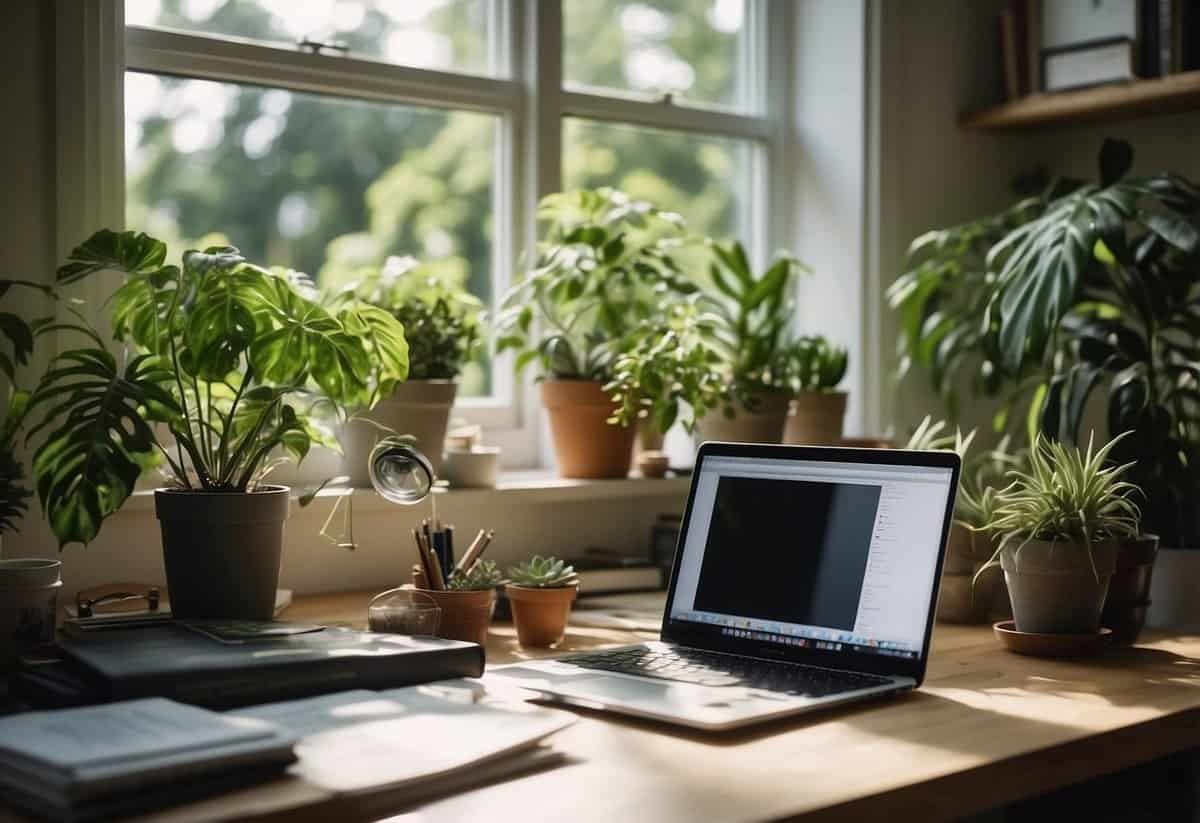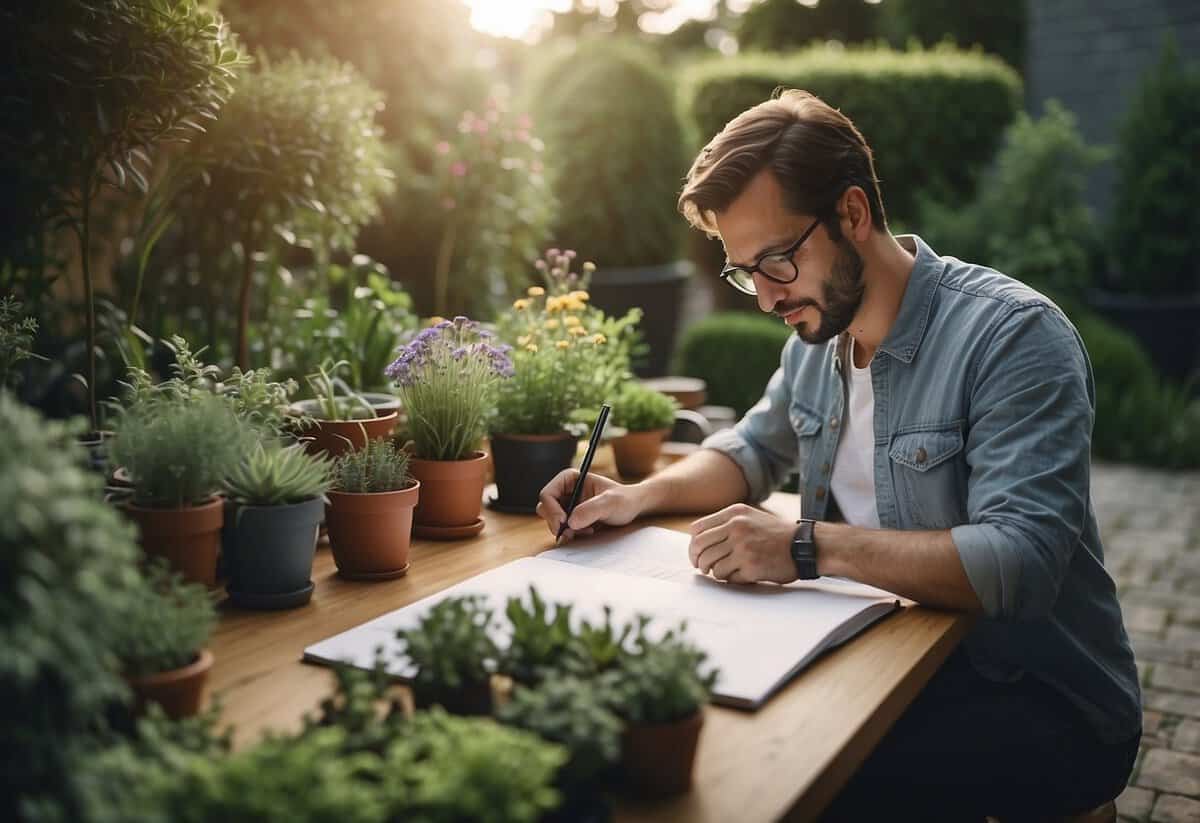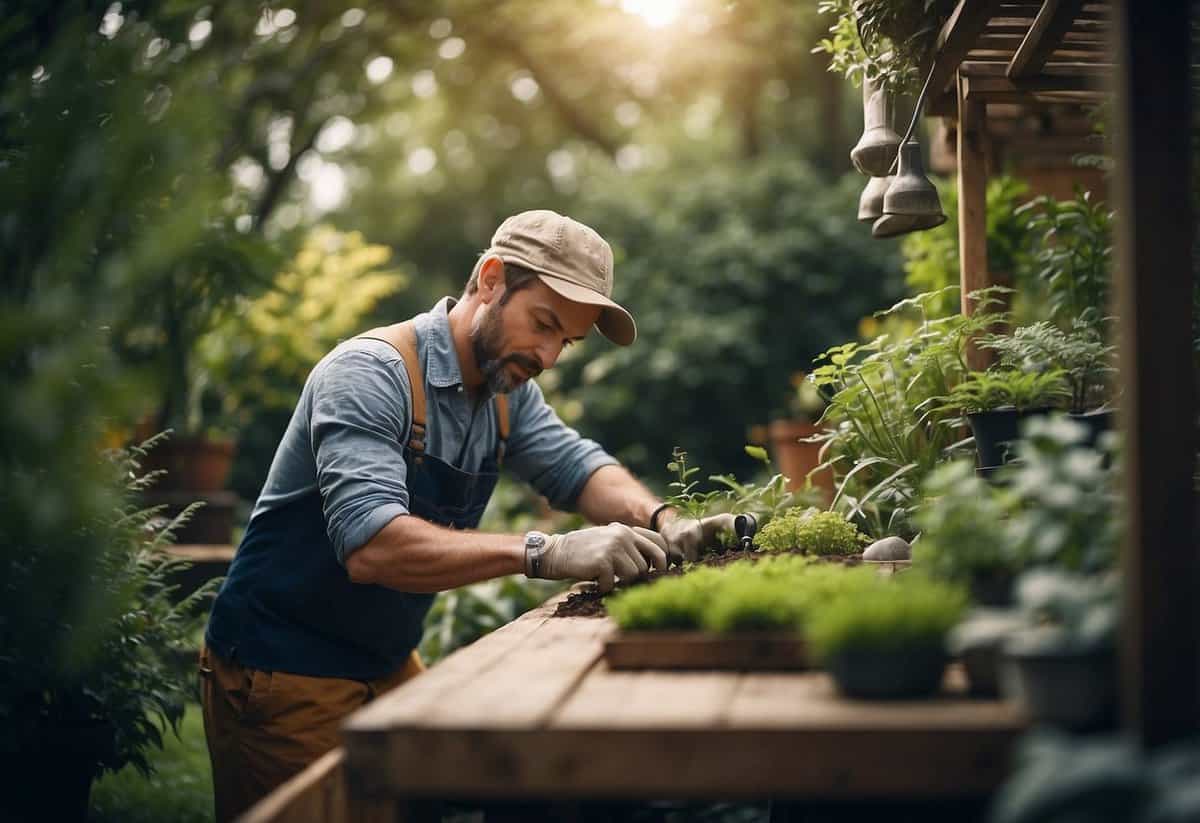What Qualifications Do I Need to Be a Garden Designer? Your Friendly Guide
Becoming a garden designer combines your love for nature with your creativity. To start, you need a high school diploma, which can prepare you for further education in design and horticulture. Most garden designers have qualifications in landscape design, horticulture, or a related field. These programs equip you with knowledge about plants, soil, design principles, and construction.

You might also consider getting certified through professional organizations. Certifications can help you stand out and provide credibility in the industry. Experience is another crucial component. Working on projects, internships, or even volunteering can give you practical skills and a strong portfolio.
Understanding site conditions and plant suitability is vital. Different plants thrive in different soils and climates, so your choices must fit the specific site. You not only design beautiful spaces but ensure they function well and last over time. This balance between artistry and practicality is what makes garden design such an exciting career.
Essential Qualifications and Education

To become a garden designer, you need specific qualifications and education. This includes formal education in garden design and a good knowledge of horticulture and plant identification.
Formal Education in Garden Design
Formal education is often necessary to become a professional garden designer. Many designers have a diploma in garden design from a recognized institution. This diploma covers various topics such as design principles, construction, and site analysis.
Courses from places like the Inchbald School of Design are highly respected. Such programs teach you to create beautiful, functional spaces while considering practical aspects like drainage and soil conditions. Online courses are also available if you prefer to learn at your own pace.
Knowledge in Horticulture and Plant Identification
Success in garden design requires strong horticultural knowledge. You need to understand different plants and their growing conditions. This includes knowledge of soil types, climate compatibility, and water needs.
Plant identification skills are crucial. Recognizing and selecting suitable plants ensures that your designs thrive. Practical experience, such as working in a nursery or assisting a professional, can be very beneficial.
You might also consider joining local horticultural societies. They often offer workshops and resources to help you keep your knowledge up to date.
Technical Skills and Training

To become a successful garden designer, you need proficiency in CAD and design software as well as an understanding of construction and hard landscaping.
CAD and Design Software Proficiency
Knowing how to use CAD software is crucial for garden designers. Programs like SketchUp allow you to create detailed plans and 3D models of your designs.
You should be able to use these tools to visualize ideas clearly.
Training in these programs often involves online courses, workshops, or even specialized classes at design schools. Many employers value candidates who have certificates or coursework in CAD software.
Using CAD tools helps you to transform your landscape design vision into workable plans. You’re able to adjust your designs easily, making it simpler to share ideas with clients and contractors.
Understanding of Construction and Hard Landscaping
You also need a strong foundation in construction and hard landscaping. This involves knowing how to implement structural elements like walls, patios, and pathways.
A solid understanding of soil, drainage, and material choices is important to ensure your designs are both beautiful and functional.
Training in this area might include workshops on construction techniques, internships, or hands-on experience in landscaping firms.
Understanding these elements is crucial because they form the backbone of your garden designs. When you can combine aesthetic beauty with practical construction knowledge, you create spaces that are both visually stunning and durable.
Practical Experience and Portfolio Development

To become a successful garden designer, you need both hands-on experience and a strong portfolio. Here’s how you can gain practical skills and build a professional portfolio to showcase your work.
Gaining Hands-On Experience
Gaining real-world experience is crucial. Begin by working in gardens, helping with planting, weeding, and general maintenance. Volunteering at botanical gardens or community gardens can also give you practical skills.
You might consider internships or apprenticeships with established garden designers or landscaping companies. These opportunities allow you to learn directly from professionals and understand the day-to-day tasks involved in garden designing.
Working on personal projects or small jobs for friends and family is another great way to get experience. Each project helps you learn about plant care, design elements, and client interactions.
Building a Professional Portfolio
A professional portfolio is essential for any garden designer. Start by documenting your projects with high-quality photos, showing before and after shots to highlight your work.
Include sketches, designs, and plans to demonstrate your creative process and technical skills. Make sure to showcase a variety of styles and types of gardens to appeal to a broader range of clients.
You can create a digital portfolio on your website or use platforms like Instagram to share your work. Networking and attending garden shows can also help, as you might meet potential clients or collaborators who appreciate seeing your portfolio in person.
Linking to relevant resources, such as what it takes to build a professional portfolio, can further establish your credibility in the field.
Business Acumen for Garden Designers

In addition to design skills, having business acumen is essential for success. You’ll need to navigate the financial aspects and build strong client relationships to thrive as a garden designer.
Understanding the Business Side of Garden Design
Managing your own business requires understanding various financial and operational aspects. It involves budgeting, pricing your services, and handling taxes. You should also learn about contracts and legal requirements to protect yourself and your business.
Consider taking basic business courses or workshops. Knowledge in accounting, marketing, and project management can also be beneficial. You might want to join associations like the Society of Garden Designers, which offer resources and support for professionals in this field.
Networking and Building Client Relationships
Networking is crucial for growing your garden design business. Attend industry events and join professional organizations to meet potential clients and other designers. Building a strong network helps you gain referrals and promotes your brand.
Communication is key to maintaining good client relationships. Listen to their needs, provide regular updates, and be transparent about costs and timelines. Being reliable and professional will help you build a solid reputation and encourage repeat business.
Engaging with clients through social media and maintaining an informative website can also strengthen your connections and attract new clients.
Creative and Artistic Vision

As a garden designer, having a creative and artistic vision is essential. This section will explore how to develop your unique design style and balance beauty with functionality in outdoor spaces.
Developing a Unique Design Style
To stand out as a garden designer, you need to cultivate your own unique design style. Start by studying various styles and influences. Look at classic garden designs from around the world, such as English, Japanese, or Mediterranean gardens. Pay attention to how landscape architects blend natural elements with artistic features.
Experimenting with different materials, plants, and layouts in your personal or client projects will help refine your vision. Visit gardens, attend design workshops, and collaborate with other designers to gain fresh perspectives. Your style should reflect your personality and creative vision, incorporating unique elements that resonate with you.
Designing sketches and creating mood boards can help. These visual tools allow you to experiment with colors, textures, and forms before diving into real projects. Over time, you will develop a signature style that sets your work apart.
Incorporating Aesthetic Beauty and Functionality
Balancing aesthetic beauty with functionality is crucial in garden design. Gardens should be both beautiful to look at and practical to use. Focus on creating spaces that are visually pleasing and serve the needs of those using them. Consider pathways, seating areas, and activity zones.
When you choose plants and materials, think about their visual impact and practical benefits. For instance, use flowering plants for color and seasonal interest. Incorporate trees and shrubs for structure and shade. Think about how the garden will look during different seasons and how it might change over time.
Functionality also involves considering maintenance needs. Choose plants that are suitable for the climate and require minimal upkeep. Plan for proper drainage and irrigation to ensure plant health. By blending beauty with functionality, you can create stunning outdoor spaces that are enjoyable and easy to maintain.
Take the time to understand the specific needs and preferences of your clients. Whether it’s a private garden or a public park, incorporating their vision with your creative touch will result in a space that is both beautiful and functional.
Practicalities of Working Outdoors

When working outdoors as a garden designer, there are several practicalities you need to consider. Key aspects include facing the challenges of varying weather conditions and performing site surveys to understand specific physical requirements.
Dealing with Weather and Environmental Conditions
Working in nature means dealing with all sorts of weather. You might find yourself working under the hot sun one day and in the rain the next. To manage this, wear appropriate clothing and gear. For instance, waterproof boots and jackets are useful when dealing with rain.
It’s also important to understand the local climate. This affects plant growth and soil health. For example, in dry regions, you may need special irrigation solutions to ensure plants get enough water. In areas with heavy rainfall, you must consider drainage to avoid waterlogged plants.
Remember to stay hydrated and take breaks to prevent heat exhaustion in hot weather. Conversely, keep warm during colder months with layers of thermal clothing.
Site Surveying and Dealing with Physical Site Requirements
Site surveying is a crucial step in garden design. Start by examining the soil to understand its type and quality. Sandy, loamy, and clay soils all have different drainage properties and nutrient levels, which will affect your planting plans.
Next, assess the topography of the site. Sloped areas may require terracing or retaining walls, while flat areas might need special drainage solutions. Use tools like measuring tapes and levels to get accurate site dimensions and elevations.
You should also consider existing environmental features. Trees, shrubs, and structures can influence your design. For instance, large trees might provide shade but compete for soil nutrients. Adjust your plans accordingly to balance aesthetic appeal and plant health.
Proper site surveying ensures that your garden design is both beautiful and functional.







